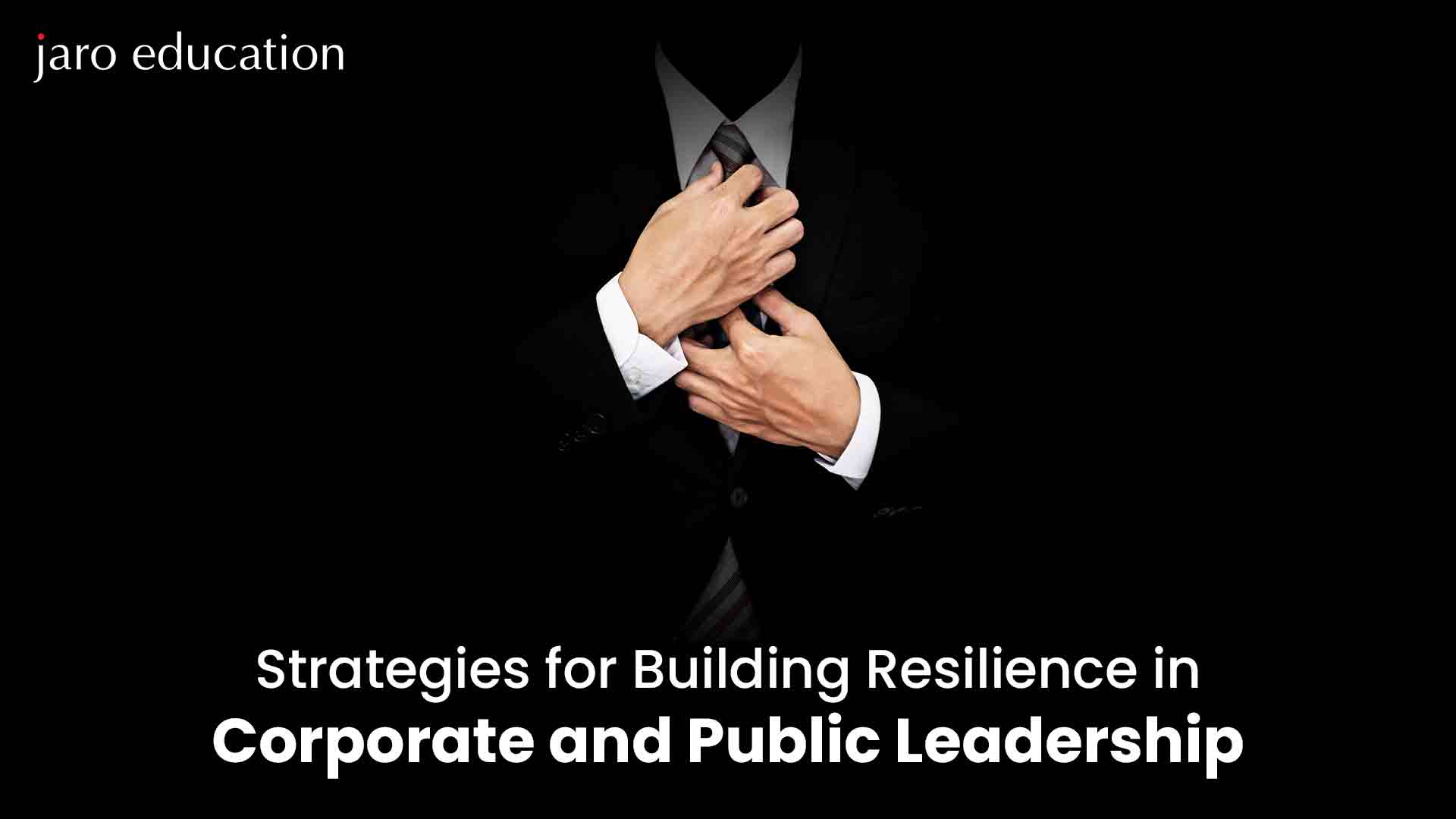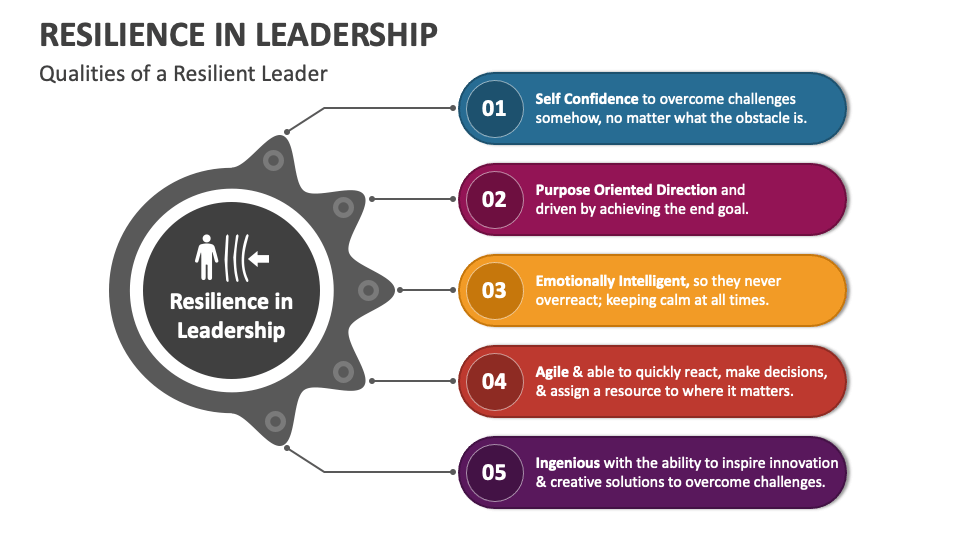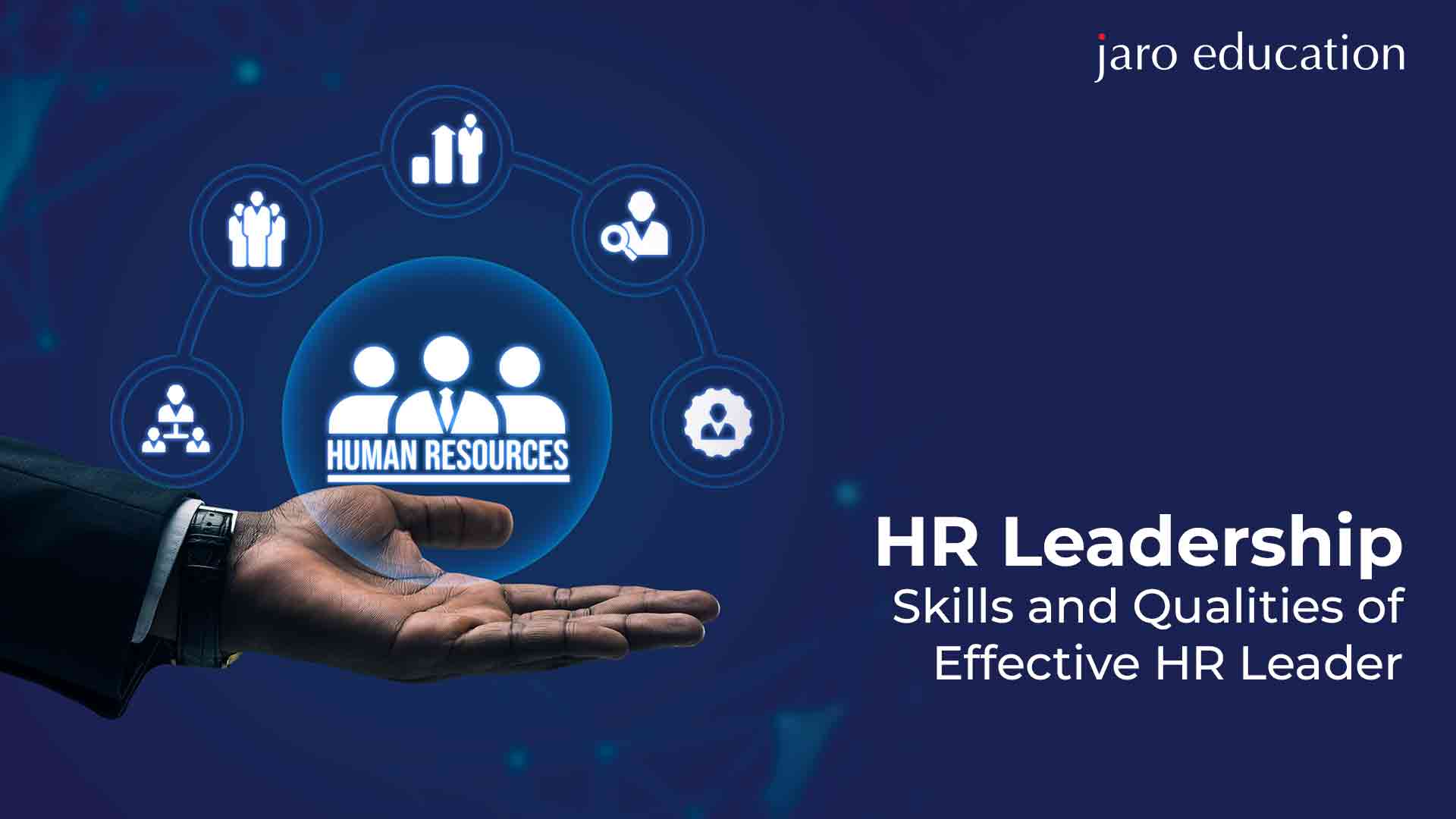Leadership Strategies for Building Resilience in Corporate and Public Leadership
Table of Contents

- jaro education
- 19, December 2023
- 10:23 am
In the corporate and public sectors, resilience is the linchpin for success, crucial for navigating constant change and unforeseen challenges. Leaders must not only weather storms but transform setbacks into opportunities.
Entering leadership strategies—the compass guiding organizations toward resilience, rooted in adaptability and collaboration, empowers leaders to anticipate challenges and foster a proactive mindset within their teams.
Whether in the corporate world or public sector, these leadership strategies translate into increased productivity, employee satisfaction, and sustained success. In this blog, we’ll explore the vital connection between resilience and leadership, offering insights and tools to navigate the complexities of these dynamic spheres. Join us on a journey where we decode the art of building and strengthening resilience in corporate and public leadership.
Understanding the Fundamentals of Resilience in Leadership
For leaders, resilience means the capacity to recover quickly from difficulties, to adapt in the face of adversity, and to continue marching towards one’s goals undeterred. In corporate leadership, resilience is manifested as the ability to anticipate market changes, pivot strategies efficiently, and lead organizations to not just survive but thrive amid challenges. In public administration, it embodies the steadfastness required to manage civic responsibilities, ensuring that public services remain uninterrupted regardless of the socio-political climate.
The Core of Corporate Leadership Resilience
The corporate environment is inherently dynamic, presenting leaders with both opportunities and threats that can emerge as swiftly as the market fluctuates. Resilience here is critical—it enables leaders to maintain a competitive edge and steer their organizations through the unpredictability of economic cycles and industry disruptions. The resilient corporate leader is characterized by a blend of qualities: strategic agility, emotional intelligence, and a vision that aligns with the organization’s core values and long-term objectives. These leaders stand ready to adapt their tactics, but their strategic north remains constant, a beacon through the fog of market dynamics.
Resilience in Public Administration Leadership
Public administration leaders face the intricate task of balancing political imperatives with the public. Their resilience is crucial in policy-making and delivering services that can withstand socio-economic shifts. It’s about fostering a responsive and accountable public service that not only withstands crises but also adapts and evolves to serve the community better. Resilience here means leading with integrity, foresight, and an unwavering commitment to the public interest.
Building Blocks of Resilient Leadership
Resilient leadership is underpinned by a series of strategic and psychological competencies that allow leaders to navigate through and emerge stronger from adversity. Central to this is “Corporate Leadership“, which involves guiding an organization towards achieving its business goals with vision and integrity. The “Leadership Strategies” that enable this include self-awareness, emotional intelligence, a clear vision, and an agile mindset.
Self-Awareness and Emotional Intelligence
Self-awareness is the cornerstone of resilient leadership. By understanding their own stress responses, leaders can better manage their emotions and behaviors in challenging situations. Emotional intelligence, which is the ability to recognize and understand emotions in oneself and others, allows leaders to make informed decisions, communicate effectively, and maintain team morale, all of which are essential in navigating through tough times.
Vision and Purpose-Driven Leadership
Having a clear vision and purpose is essential for resilience. It provides a sense of direction and helps maintain focus on long-term goals despite short-term obstacles. A strong vision acts as an anchor, offering stability for both the leader and the organization during turbulent times, ensuring that temporary setbacks do not derail the pursuit of overarching objectives.
Cultivating an Agile Mindset
Agility in leadership is not about reactionary pivots or haphazard flexibility; it is a deliberate strategy to remain open to change and innovation. An agile leader in today’s corporate or public sphere is one who practices foresight, anticipates change, and prepares to meet it head-on with grace and strategic planning.

*collidu.com
The Pillars of Strategy in Leadership Resilience
Strategic thinking drives leaders towards resilience. It involves not just planning for the immediate future but also envisioning and preparing for various possible scenarios. Strategic leaders use resilience as a lens through which every potential decision is evaluated, ensuring the sustainability and adaptability of their organization. Specifically, strategies that enhance resilience include risk management, adaptive leadership, and contingency planning. These leadership strategies empower leaders to preempt disruptions and respond with agility.
Fostering a Culture of Continuous Learning
A culture of continuous learning is the fertile soil from which resilience grows. Organizations that prioritise learning are better equipped to adapt to change and rebound from setbacks. Learning from failures is particularly powerful, as it transforms challenges into valuable lessons. A resilient mindset is, thus, a product of persistent learning, critical self-reflection, and the unrelenting pursuit of improvement.
Building and Leveraging a Supportive Network
Resilience is seldom a solo endeavor; it thrives on the support and insights of a robust network. Mentorship and peer networks provide leaders with the diverse perspectives and emotional support necessary to navigate through adversity. Building such networks requires a strategic approach: seeking mentors with experience in overcoming relevant challenges, cultivating peer relationships across different industries, and fostering a culture where help and advice are actively sought and freely given.
Effective Communication and Transparency
Open communication fosters a resilient organization. Leaders who communicate effectively ensure that their teams are aligned, informed, and ready to face challenges head-on. Transparency builds trust—a critical currency in times of uncertainty. When leaders are transparent about both successes and difficulties, they cultivate an environment where team morale is bolstered, and confidence in the leadership is strengthened.
For those aspiring to deepen their strategic leadership skills, IIM Indore’s “Corporate and Public Leadership” offers a transformative experience. Delve into advanced leadership strategies and corporate leadership principles to fortify your resilience in the ever-evolving business landscape.
Practical Application of Resilient Strategies in Leadership
Understanding resilience in a theoretical sense is only the first step; the true measure of leadership is the practical application of these leadership strategies. By employing strategic foresight and maintaining open channels of communication, the leader are able to realign the organization’s objectives, preserve team morale, and emerge from the downturn more robust and more focused.
Scenario Planning and Risk Management
At the core of scenario planning is the understanding that the future is not a single, predetermined path but a multitude of possibilities. It is a structured method for imagining possible futures in which decisions may play out. Leaders use scenario planning to map out different scenarios, including best-case, worst-case, and several in-between cases based on various internal and external factors. This process enables them to visualize impacts, outcomes, and responses in a safe, controlled environment.
Risk management complements scenario planning. It involves identifying potential risks in each scenario, assessing their likelihood and impact, and developing leadership strategies to mitigate them. Effective risk management ensures that when risks become realities, they cause minimal disruption.
Incorporating these practices into leadership strategies means building a culture where regular assessments are the norm. Teams are encouraged to think creatively and expansively about what the future may hold, to challenge assumptions, and to consider the impact of their actions in different contexts. Leaders must then be willing to adjust plans based on these insights. This cyclical process of assess-imagine-adjust is not a one-time event but an ongoing practice that keeps the organization agile and ready for change.
Prioritizing Well-being and Mental Health
The well-being and mental health of leaders are not just personal issues; they are strategic imperatives central to the resilience and effectiveness of their leadership. When leaders prioritize their well-being, they are more equipped to handle the pressures and stresses that come with their roles.
Fostering work-life balance is equally important. Leaders must set and respect boundaries between their professional and personal lives. This can mean delegating tasks to avoid overwork, taking regular breaks throughout the day, and ensuring they have quality time away from work. By modeling this behavior, leaders also set a precedent for their teams, promoting a healthier, more resilient organizational culture.
Leaders who actively maintain their mental health are better able to face the demands of their roles with a clear, focused mind. They can inspire their teams, drive positive change, and navigate through challenges with a sense of calm and purpose. Ultimately, a leader’s well-being is a crucial factor in their ability to sustain success and foster a resilient leadership style.
Future-Proofing Leadership with Resilience
In the ever-evolving landscape of public sector and corporate leadership, the ability to anticipate and prepare for the future is invaluable. Resilient leaders are not only equipped to handle current challenges but also to envision and adapt to the demands of tomorrow.
By fostering resilience, leaders cultivate the necessary skills to manage future crises, adapt to technological advancements, and respond to global market shifts and policy changes. This proactive approach to leadership development ensures that when faced with the unknown, leaders can rely on their inner fortitude, learned experiences, and strategic foresight to guide their organizations successfully into the future. In doing so, they create a legacy of strength, adaptability, and vision that defines the resilient leaders of tomorrow.
Conclusion
To summarize, resilience in leadership is about strategic foresight, adaptability, and continuous learning. It is about building networks, maintaining clear communication, and safeguarding mental health. Leaders who cultivate these qualities today are not just preparing to face tomorrow’s challenges; they’re ensuring they thrive through them.
Embrace resilience as more than a buzzword; see it as a guide to transformative leadership. The future belongs to those who are resilient—leaders who can turn adversity into opportunity and change into progress. Invest in building this resilience, and you will set a course for enduring success.
May your leadership journey be marked by this strength, inspiring a legacy of resilience for generations to come.








